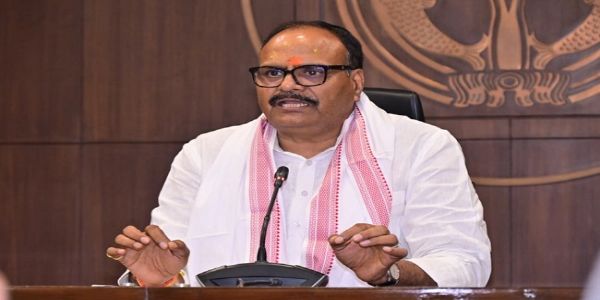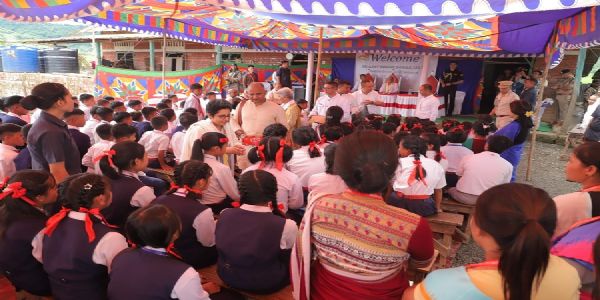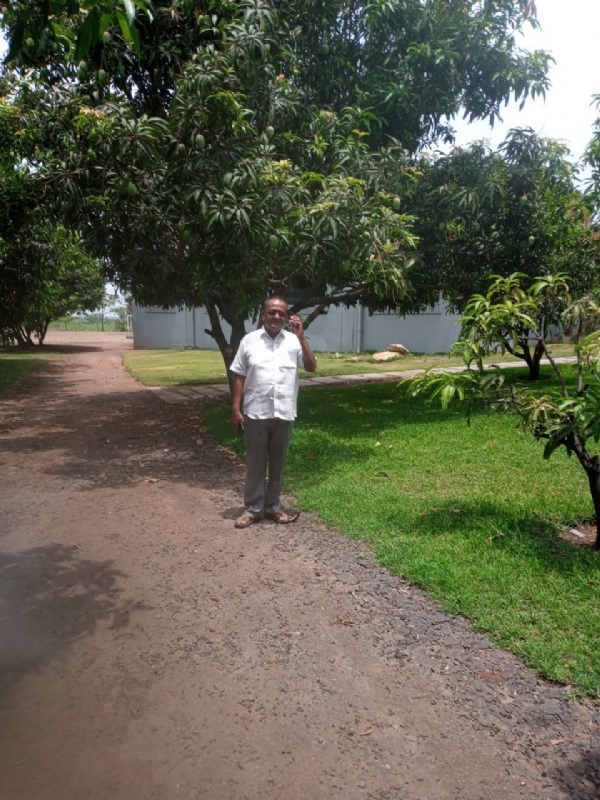

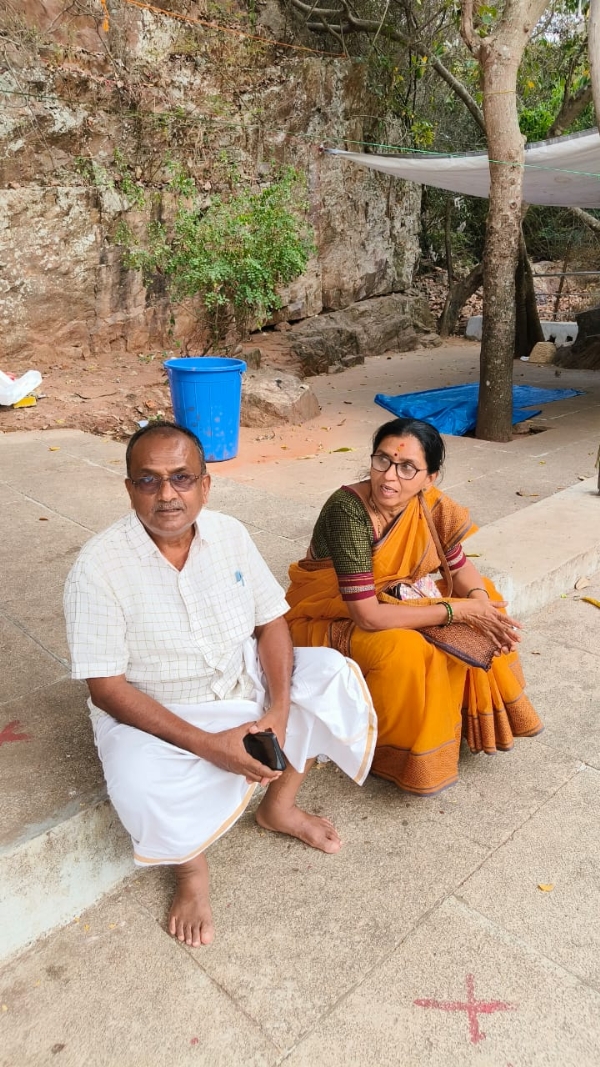
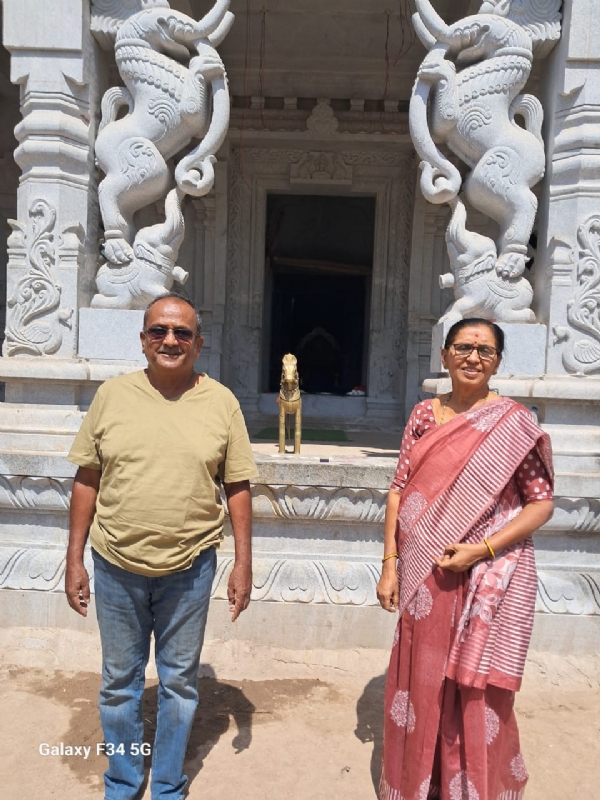

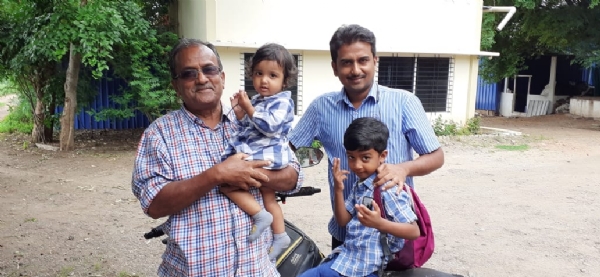
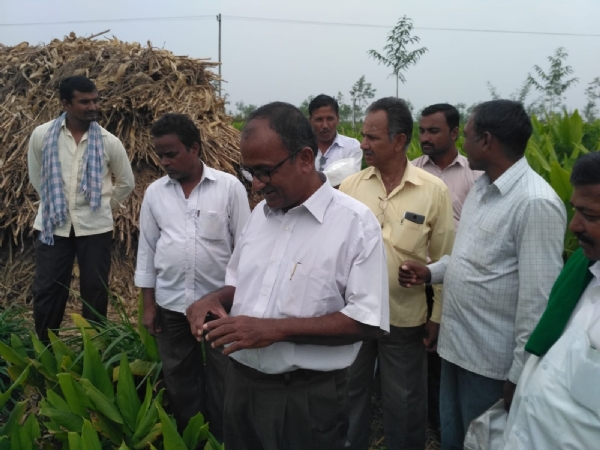
Bengaluru, 16 July(HS): Shivayogi Revanasiddappa Byakod of Ranna Belagali village near Mahalingpur town of Mudhol Taluk in Bagalkote district is an unassuming personality. He is a postgraduate in Agricultural Sciences from the University of Agricultural Sciences, Dharwad(UASD). But these qualifications are for official records or namesake. The innumerable lessons he has learnt and the knowledge he has imbibed from the University of the World are just unimaginable. Likewise, the number of farmers benefited by his Sneha Krishi Agri Clinic & Agro Services Centre in the region is vast enough to list out. He is a testimony of a series of experiments, failures, pain, and agony, struggling to make it a role model marvellous success story. Perhaps, it is high time he made himself free to pen his motivating path to the road of success for hundreds and thousands of peasants.
In an informal chat sometime back at his down to ground farmhouse surrounded by lush green Sugarcane fields with constant screaming of herds of Peacocks and Peahens, small and long calls of a variety of birds, Shivayogi R. Byakod dwelt with the perplexed mentality of the farming community in general and the onlookers in general. Excerpts of the same:
Q: There is a general opinion prevailing that the farmers are not getting a fair price for their produce. Do you subscribe to the oft-repeated feeling?
Shivayogi R. Byakod: The Farmer is getting remunerative prices for some of his produce and is flush with funds. There are very few farmers who may have black money. It all depends on how we place things. When a farmer is there, making money from his lands, he is flush with funds, and all these years, he has also made a good lot of savings as well. The phenomenal change is quite natural.
Q: So, do you mean to say that the farmers are doing well?
Shivayogi R. Byakod: In addition to these positive developments, the quality of life is increasing. For those people who have aspiration, who have discipline, who have planned farming, captive manpower and good resources like land, labour and capital, they are all doing quite well. I have seen many such farmers, and there is no dearth of such successful people.
Q: If that is the case, why then many of them on the crossroads and bankrupt?
Shivayogi R. Byakod: I know a farmer who had four acres of land about 30 years ago. Now, today, the same farmer is a proud owner of 80 acres of land. And some farmers have sold all their properties due to falling prey to abnoxious vices like boozing, gambling and whatnot. They are also there. Such kind of people are also amongst us. It all depends on the individuals. So, it all depends on individual orientation. As necessity creeps in, so comes the way out.
Q: Despite working hard in the fields, how come dryland farmers struggle to make a living?
Shivayogi R. Byakod: In a way, and according to me, dry land farming is no farming at all. Dry land farming is not at all remunerative, but at the same time, dry land farming land holdings are vast. You cannot sustain with 2-3 acres of fields by dryland farming. On the other hand, a rich farmer with bigger plots, like 40/60/80 acres, is minting quite a lot of money. If one were to do crop planning, animal husbandry by studying the market scenario, dryland farming can also be viable. The main thrust should be proper planning and study of the overall prevailing scenario.
Q: Many dryland farmers have made it a religious practice to keep sowing the same crop year on year. What are the reasons for such a plight?
Shivayogi R. Byakod: In fact, monocropping is very bad and detrimental to the interests of farmers. For instance, Tur Dal, Bengal Gram and Green Gram and crops like that. If everyone in one particular region wants to grow the same crops, then there can be no assurance of fair prices for the produce. What keeps happening when everyone grows Onions continue to be evinced every now and then.
Q: What is the role of the government in crop planning?
Shivayogi R. Byakod: What the government should do is to synchronise and ask the farmer to go in for a systematic crop planning demand, keeping in mind the prospects, availability, and agro-climatic conditions and above all, the captive consumption. For example, Soyabean, what is the proportion of the requirement for Soyabean? Let us ask the farmer to grow soybeans to this extent. In all the agro-climatic zones identified for growing soybeans, should be suggested to grow to get better remunerative prices.
Q: But, so far, the government is doing nothing to arrest this uphill task. What is the way out?
Shivayogi R. Byakod: The farmer will be more than happy to grow Corn, Bajra, and all Millets. The main problem with the oilseeds is this. Millets, we are surplus; milk, we are surplus and likewise many other crops. This is all the result of poor planning by the government. Technology is so much more advanced to such an extent that you can tell the farmer in a particular zone to grow this crop for a stipulated time to ensure fair prices for the produce.
Q: If the best of technology is available, then what is preventing the government from passing it on to the farmers?
Shivayogi R. Byakod: Depending on the buffer stock with the government, the proportion of consumption and based on the export potential, farmers can be advised on the crop pattern to be adhered to. They can even be given an option to grow the types of crops suitable for their region. Give them the best of technology, which is already there. We only need to create the desire and willingness, and a systematic dissemination of know-how and knowledge is a must.
Q: There is no system in place to educate the farmers regularly. With this paradoxical predicament, how do you expect farmers to be up to date in technology deployment?
Shivayogi R. Byakod: In the crop planning, the decision-making process is crucial, like what is needed, what is required and how best the farmer can grow along with value addition. By doing so, we can earn a lot of money. For instance, Grapes. We are selling here at the rate of Rs 50 or 60 per kilogram, whereas the same Grapes are costing Rs 100-150! Now, infrastructure facilities have improved, and storage amenities have improved. The government and the institutions have to work in tandem.
Q: Do you mean to say that elsewhere, technology is being adapted for better results?
Shivayogi R. Byakod: Thanks to the state-of-the-art technology being deployed, Poemogranate farmers in neighbouring Tamil Nadu and Maharashtra are reaping the benefit of Rs 10-15 lakhs per acre. There are a number of such success stories to prove the point. We have to plan it that way. The institution's job should be to disseminate the know-how. Give them the example, right example. Ultimately, our focus should be to increase productivity, minimise the cost. The dependence of the market situation, uncertainty, labour and things like that are bound to be there as they were there earlier and will also continue to be there.
Hindusthan Samachar / Manohar Yadavatti





